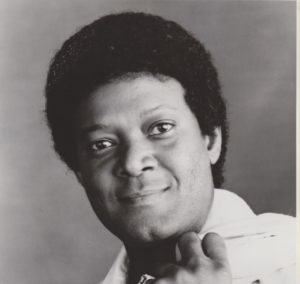For a pop songwriter, the gold standard is a song that has a chorus that people can sing along to. That kind of thing not only goes a long way toward having the song becoming a hit but also gives it longevity. If your chorus is catchy enough people are likely to still be singing it years later. Having spent some time in bars with jukeboxes and live bands I think it’s fair to say that “Drift Away” qualifies as one of those songs.
Lawrence Darrow Brown was born in 1940 into a family of sharecroppers in Texas. His grandfather was a Baptist minister which is how Brown first became inspired by gospel music. He moved to Los Angeles when he was in his early 20s with an eye on an acting career but it isn’t easy to break into the Hollywood scene so Brown turned to singing to make some money while he was waiting for his chance.
Brown recorded for several labels during this period, under several names. One of the people he encountered was a guy named Sonny Bono who thought the independent label Stripe Records would be a good fit for Brown. Once he signed on the people at the label suggested the name Dobie Gray which was inspired by the then-popular TV show The Many Loves of Dobie Gillis.
He may have acquired his name at Stripe but he accomplished little else. Success didn’t come until 1963 when he was recording for Core-Dak and it was a modest success at that. The single “Look at Me” climbed to the not-too-lofty position of #91 on the Billboard Hot 100. Two years later, however, Gray struck gold with his #13 hit “The In Crowd.” With the legendary Wrecking Crew backing him up, Gray hit the Hot 100 again with the follow-up, “See You at the Go-Go.” But things dried up for a while, a long while, after that.
Gray kept recording for small labels and he even got some of that acting work he’d come to L.A. for in the first place. He spent 2 1/2 years in the cast of the L.A. production of the musical Hair.
Do you remember Jethro from The Beverly Hillbillies? He was played by Max Baer, Jr. and after his acting career, Baer became quite a successful manager. One of his clients was a band called Pollution that had formed in 1970 and included Gray as the lead singer. The band recorded two albums that didn’t make much noise and by 1972 Gray had signed with Decca Records. He prepared to work on an album for the label to be recorded in Nashville with Mentor Williams as producer. Williams was the brother of the very successful songwriter Paul Williams with whom Gray had recorded some demos earlier.

One of the songs they recorded in Nashville was “Drift Away” which featured that indelible chorus as well as some fine guitar work from Reggie Young. The song was written by Mentor Williams and first recorded by John Henry Kurtz in 1972. The following year it became a #5 smash for Gray, selling a million copies and earning a Gold Record. Gray followed it up with his cover of “Loving Arms” which did respectable but not spectacular business, reaching #61.
By then Decca had been enfolded into MCA Records and Gray made three albums for the label. None of them was very successful, a problem Gray felt was caused by the fact that MCA “didn’t know where to place a black guy in country music.” Now a permanent Nashville resident, Gray signed with Capricorn records and had modest success with his last two solo singles, “If Love Must Go” (#78), and “You Can Do It” (#37). During this time, Gray toured in Australia, Europe, and after persuading the authorities to allow him to play to integrated audiences, South Africa.
Gray recorded for Capitol Records in the 1980s and had some success on the country charts. He continued to tour and release albums in the 1990s. Unexpectedly, “Drift Away” became a hit all over again when Gray recorded a new version of the song with the band Uncle Kracker in 2003. The new version made it all the way to #9 on the Hot 100 that year and spent an incredible 28 weeks at the top of the Adult Contemporary chart.
Dobie Gray died in Nashville in 2011. He was 71 years old. And we’re still singing that chorus.





Comments